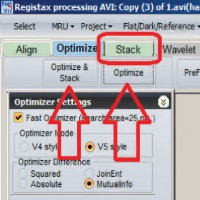A Tribute to Colin Pillinger / The Very Basics of Image Processing

Tuesday 17th June, 2014
 |
Our evening began with a short tribute to the late Colin Pillinger CBE FRS (1943 — 2014) by one of our members, Andrew Baxter, who actually attended Swansea University with him. Colin came into the media spotlight as principal investigator for the ill-fated Beagle 2 mission to Mars. This small Mars lander hitched a ride on the European Space Agency's Mars Express spacecraft and successfully detached from its parent craft but failed to land safely. To date, it is not known why the landing failed or where it is despite searches by various other spacecraft orbiting Mars.
Colin described himself as "an organic chemist, turned geologist, turned astronomer" as he began his academic career at Swansea University studying chemistry alongside Andrew. Andrew told us that they were very keen bridge players and Andrew admitted to playing through the night — often to the detriment of his studies. Colin, however, made sure his studies did not suffer and he went on to complete not only his degree but a doctorate in chemistry.
Colin's skill at the spectrographic analysis of rocks led to him being asked to study the first Apollo moon rock samples. He even has a main belt asteroid named after him (15614 Pillinger) as well as a viewpoint overlooking an ancient Martian crater (Pillinger Point). Despite being diagnosed with multiple sclerosis at the age of 62 he carried on with his research and in 2003 was awarded a CBE for his services to Higher Education and to science.
Following this tribute, another of our members - David Morris — gave an enthusiastic talk about "The Very Basics of Image Processing". David is an amateur astronomer with a passion for astrophotography. Many of his images are taken from his back garden in Woodford Halse near Daventry. Despite this being a reasonably dark site he recommends making the best of any images with the use of various pieces of computer software. The programs he recommended were GIMP, Registax, Deep Sky Stacker and Paint.net and, with the help of a few volunteers from the audience, he demonstrated how to improve on your astronomical images.
GIMP is short for GNU Image Manipulation Program and is a free program that can run on multiple operating systems (Linux, OS X and Windows). It is a basic image editing program but also is a drawing package and can convert between different image formats. David used this software to remove noise, ensure an evenly black night sky background, and merge a series of photos of the same section of sky to make some star trails.
Registax is a free image processing program for Windows aimed at amateur astrophotographers. It processes a number of similar images of the same scene taken with a camera or webcam and selects the best ones to produce one final, and hopefully, better quality image. To demonstrate the usefulness of Registax, David input a webcam video of Jupiter and then another video exposed to bring out Jupiter's moons. The end result was two separate files — one with an enhanced image of Jupiter and another with a better image of the Jovian moons.
Then, using Paint.net, which is another free image editing program, David merged the improved images of Jupiter and its moons into one final image. He explained that this seemingly circuitous process was necessary as, to capture an image of the moons, Jupiter needed to be overexposed making it appear a white disc in the moons image. Similarly, to image Jupiter correctly to see its planetary bands, the moons do not appear at all.
The final piece of software he demonstrated was Deep Sky Stacker, which is a free program aimed at astrophotographers who wish to combine a number of images of the same object. This program is similar to Registax although Deep Sky Stacker needs the images to be well aligned. In essence this means that the imaged object, whether that be a star field or single planet, appear in almost exactly the same place in each image for the program to work.
This article was written for the club news column of the Stratford Herald. The actual lecture explained the subject at a deeper level.
